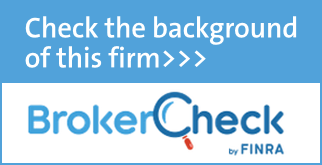As a small business owner, it’s easy for your attention to focus on the profit numbers. However, your profit doesn’t entirely measure the financial health of your business. Your cash flow does!
Cash flow is the pulse of your business, measuring the comprehensive financial incomings and outgoings of your company and determining the financial health of your business. In order to be able to properly project the future viability of your business, you must diligently monitor your cash flow. While your profit margins are important, your cash flow includes so much more vital information, including the following and more:
- Accounts receivable (i.e. money coming in)
- Accounts payable (i.e. money owed)
- Capital Expenditures
- Inventory & Non-Cash Assets
- Investment Activities
- Taxation
- Outstanding Invoices (i.e. money that will be coming in)
Your small business cash flow is essentially your business’s financial health report card, identifying how much money there is and where money is coming and going. A business can have positive cash flow when the money coming in is greater than money going out or negative cash flow when there’s more money going out than coming in. It’s important to understand that your business can fluctuate between positive and negative cash flows, depending on what’s happening with the operating activities of a business during the specified period of time; however, the ultimate goal is to find yourself more consistently in a positive cash flow status.
There are some common cash flow problems in small businesses that may be influencing a more negative cash flow outcome:
- Too Much Inventory
- High Overhead Expenses
- Slow-Paying Invoices or Inconsistent Invoicing Procedure
- Crippling Discounts and Prices Affecting Profit Margin
The above problems, while common, can certainly be avoided with four healthy small business cash flow management tips!
Top Tips on How to Manage Cash Flow in Your Small Business
1. Monitor Cash Flow Regularly
As demonstrated, monitoring your small business cash flow is the only real measurement of viability you have as a small business owner. Because of this, you have to begin monitoring the cash flow regularly, whether it be monthly, quarterly, etc. It’s helpful to utilize online financial management software (e.g. QuickBooks, ProfitBooks, etc.) to help produce a cash flow statement, but the old-faithful spreadsheet can do the trick, as well! Working with an independent financial advisor can help you to analyze your cash flow statements to ensure you’re on the right path to financial viability for your business.
2. Free Up Cash
One of the easiest ways to boost your cash flow is to free up more cash within your business, and there are a couple different ways you can do this:
- Cut costs—Just like in your personal budget management, small business budgets need a trim here and there from time to time. Cut back on subscription services that are no longer needed, or try to reduce any of your outgoing expenses through negotiation or by finding alternatives. An independent financial advisor can shed some cost-saving advice on strategic ways to cut costs!
- Sell Obsolete Inventory and/or Equipment—Do you have inventory or equipment that is no longer serving your business? Instead of letting these things collect dust, they can better serve you by liquidating them into cash! Sell what you don’t need to boost your cash flow.
3. Streamline Invoicing
Most businesses’ survival relies on payment of invoices. With such potency behind invoicing, it’s important for small businesses to establish a consistent, efficient invoicing procedure. By consistently billing clients as soon as services are delivered, requesting payment immediately upon receipt of invoice, and creating follow-up invoices for your clients, your customers will learn what the expectations are when working with your business.
Collecting payments from your clients as soon as possible will always help boost your small business cash flow. If your client requests a larger product or long-term service, creating a clearly-defined payment schedule with an upfront deposit can help to keep your business operating efficiently because you won’t have to wait until the end of the contract to collect, while until then, your cash flow may be taking a hit.
4. Future Proof Your Business
While it’s necessary to monitor the here and now of a business (i.e. the current financial activities), it’s just as crucial to prepare for your business’s future. Creating a small business cash flow projection can help you anticipate potential road bumps, so you can address them before they arise.
Just as suggested with personal financial management, establishing a rainy-day fund can help alleviate any future cash flow disturbances that may come up. Try to create a financial buffer for your business that covers at least three months of operating costs. That way, no matter what crosses your path—maybe a big client faulting on payments, etc.—you can efficiently support your business.
Boosting your small business cash flow greatly boosts your future viability, and working with an independent financial advisor can help protect your business from unnecessary financial missteps.
Get in Touch with Focus Financial
At Focus Financial, you can trust our team of experienced independent financial advisors to offer guidance, expertise, and small business financial management strategies that’ll address all of your business’s needs and goals. Contact us today to learn more about our business planning services that prioritize your professional financial health, setting your small business up for long-term success!


